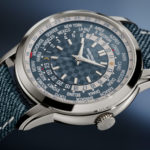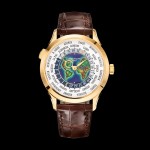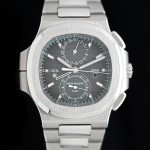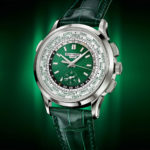Hands On: Patek Philippe World Time with Date Ref. 5330G-001
A date with history.
At Watches & Wonders 2024, Patek Philippe introduced the World Time with Date ref. 5330G-001, the brand’s first regular-production world time with a date.
Although the model officially debuted last June with a 300-piece, purple-dial limited edition for the Watch Art Grand Exhibition in Japan, the ref. 5330G-001 brings this complication into the mainstream with global distribution and a more versatile colour palette.
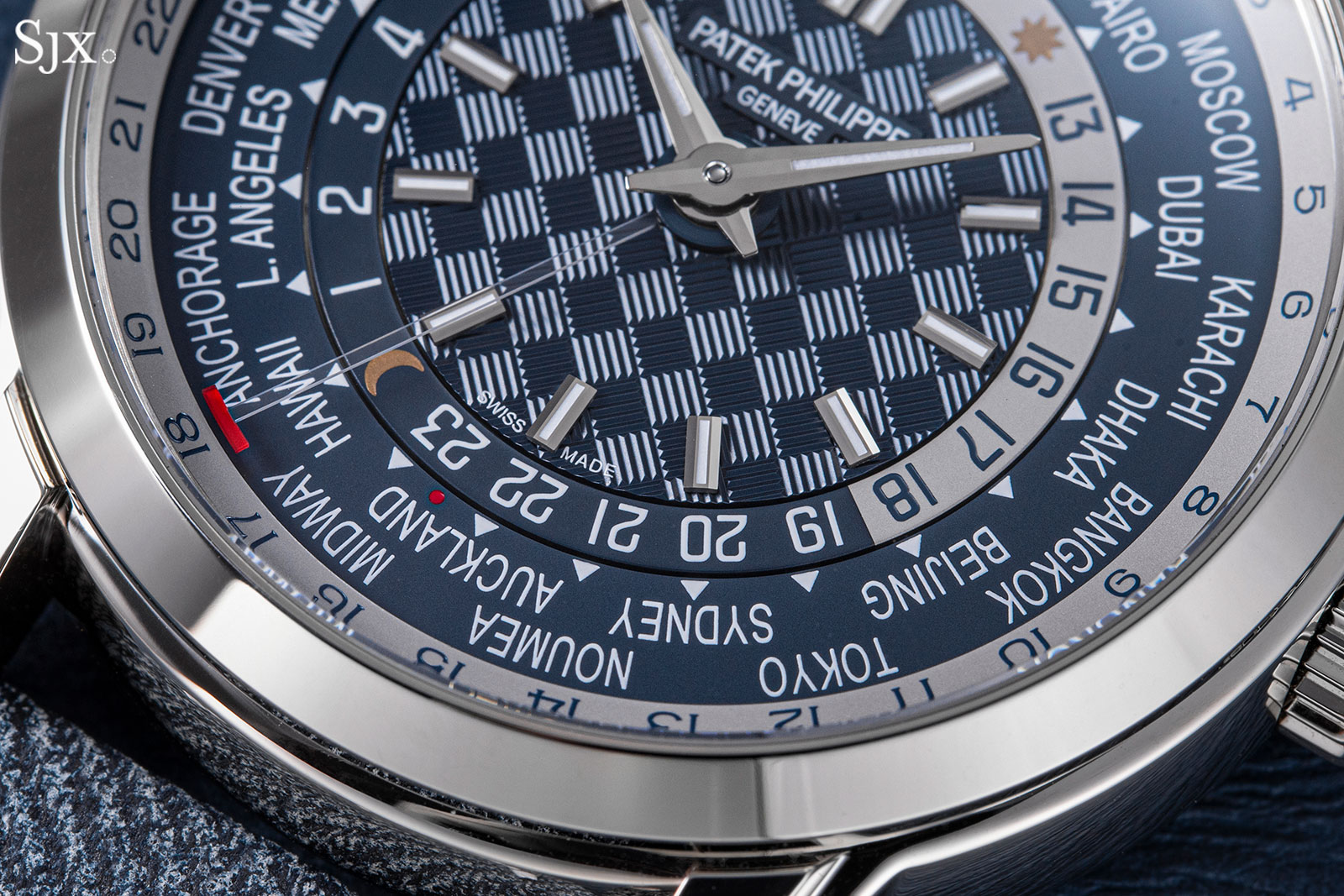
Initial thoughts
The ref. 5330G is quintessential Patek Philippe is several ways. It embodies a complication synonymous with the brand that is presented in a slim case. The overall aesthetic is modern but clearly vintage inspired. And the movement incorporates a complication that is cleverly executed and necessarily thin to fit the case. So conceptually, it is appealing.
The ref. 5330G is also appealing in terms of its tangible qualities. It has good proportions and a refined, polished appearance that is typical of modern Patek Philippe watches.
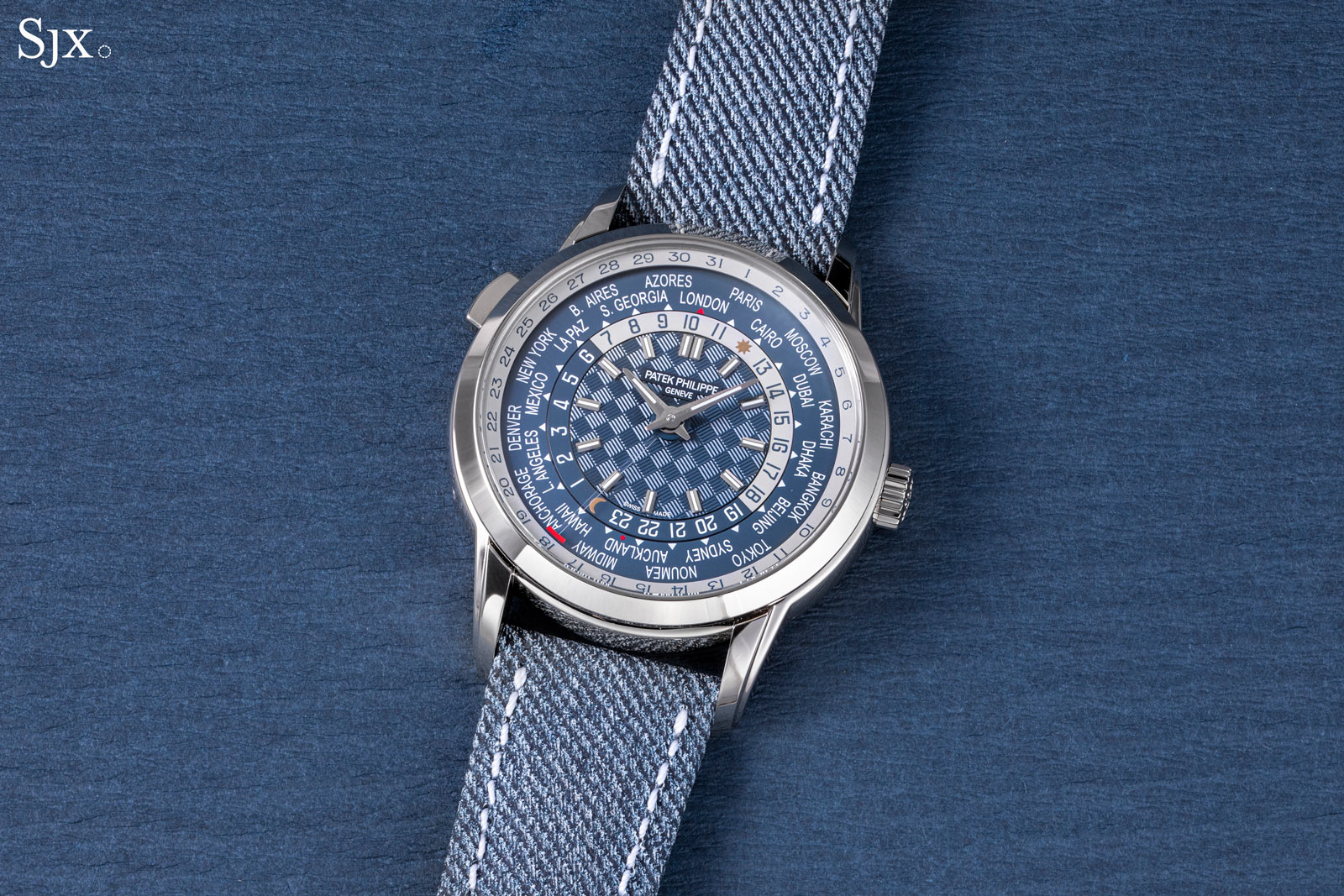
What do I not like? The carbon pattern dial is intrinsically attractive – it is done well and modern in feel – but feels a bit overused. Earlier world time models, on the other hand, had dial patterns that were unique to the reference.
And the other is the Patek Philippe pricing. At over US$76,000, the ref. 5330G is steeply priced for a relatively straightforward pair of complications, even considering the ingenious construction of the date. But it is a Patek Philippe, and the unrivalled brand name alone accounts for some of the price.
Quintessential Patek Philippe
No brand is more strongly associated with the world time than Patek Philippe, which has produced this complication on and off since 1937. Originally developed by Geneva-based independent watchmaker Louis Cottier in 1931 the world time complication simultaneously shows the current time in each of the 24 major time zones around the world, thanks to an hour ring that rotates counter-clockwise.
While Cottier’s invention was produced by other brands including Vacheron Constantin, it was Patek Philippe that succeeded in cementing the world time complication in the zeitgeist of today’s watch collecting, even though the brand stopped producing world time watches shortly after Cottier’s death in 1966. Such was the impact of early Patek Philippe world time watches like the refs. 1415 and 2523, that they have long been darlings of the auction world thanks to both their rarity and intrinsic beauty – a platinum ref. 1415 was once the most valuable watch in the world.
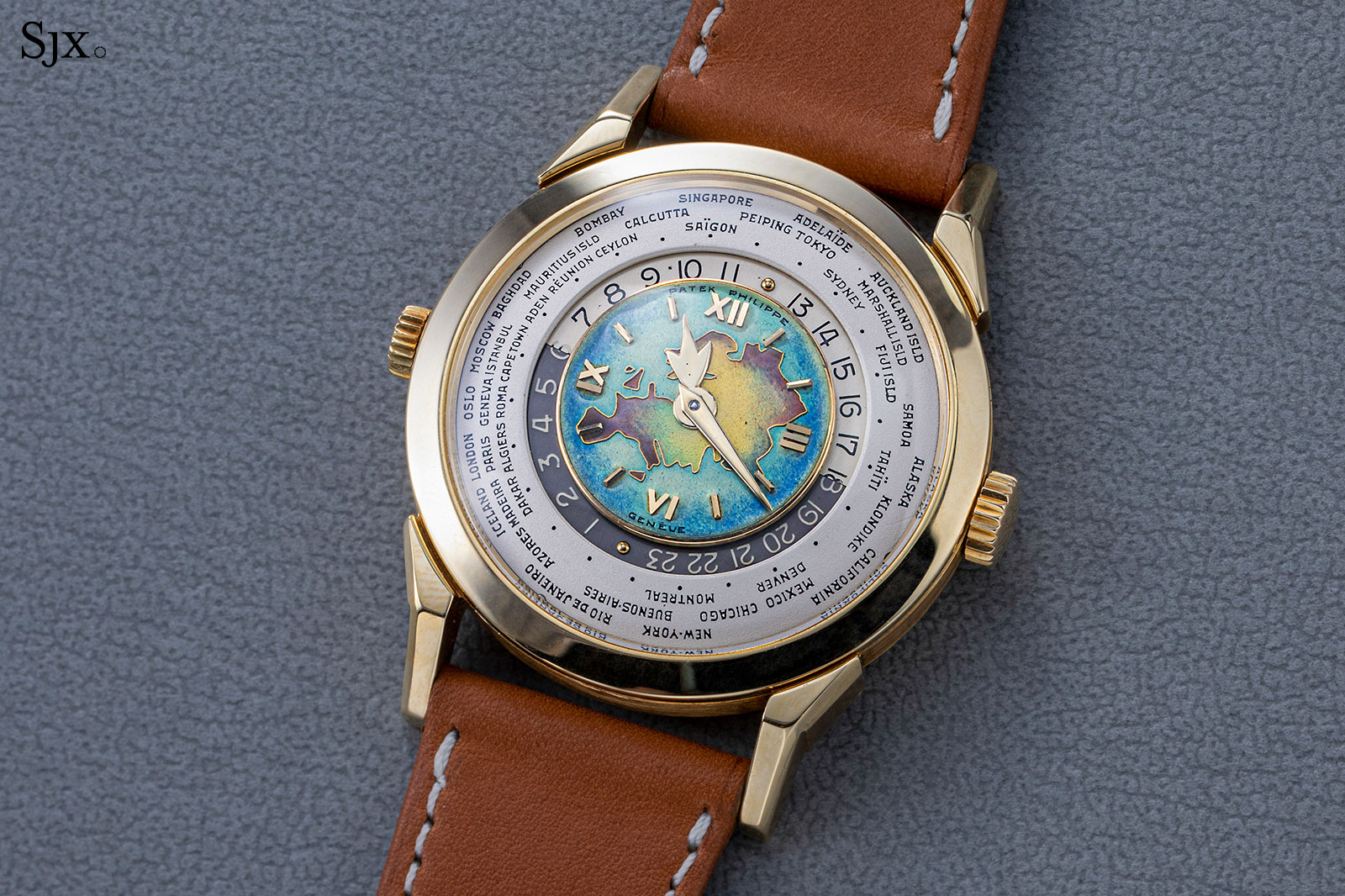
The ref. 2523 World Time Cloisonne “Eurasia” made in 1953
In fact, the brand’s contemporary line-up of world time watches is fairly recent in comparison. It date to 2000, when the brand launched the ref. 5110, which was the first world time model with a pusher to advance the local time and city ring with just one click.
The ref. 5110 was eventually replaced by the refs 5130 and then the ref. 5230, which were functionally identical but in larger case sizes and more contemporary designs. The brand also added models with additional complications in addition to the world time, like the ref. 5935A with a chronograph, but it is arguably the pure-play world time models that are the classics.
The ref. 5330G opens the next chapter in the history of the brand’s world time watches, with an elegant technical solution to an obscure problem.
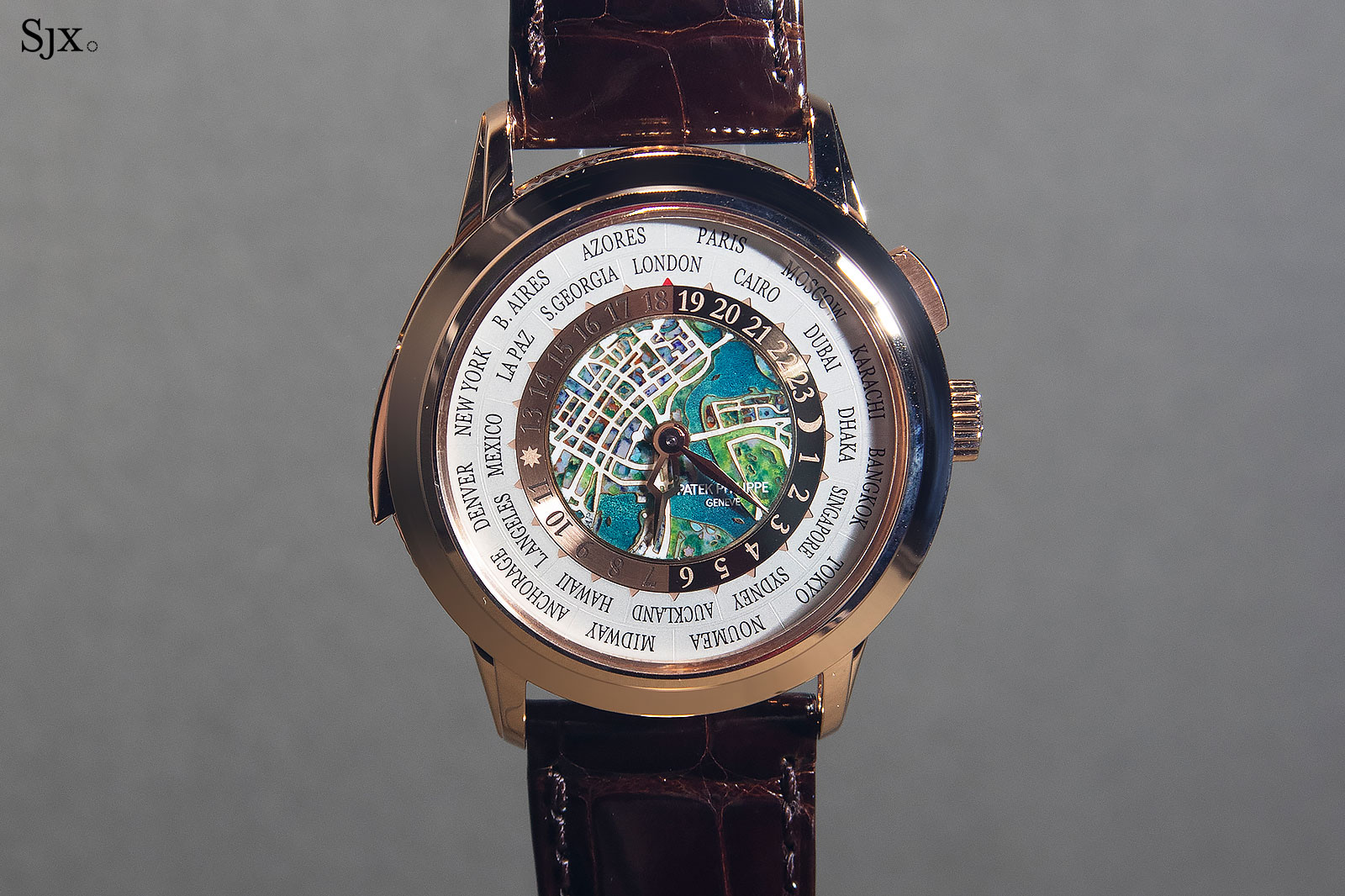
The modern-day ref. 5531R World Time Minute Repeater
A date with history
As accomplished as Patek Philippe’s line-up of world time watches has become over the years, none were capable of displaying the date. What at first appears to be a simple problem becomes more complex when you realise that there are situations when the date must move backward when advancing the time forward, such as when traveling east across the International Date Line (IDL), the imaginary line on the Earth that separates one calendar day from the next.
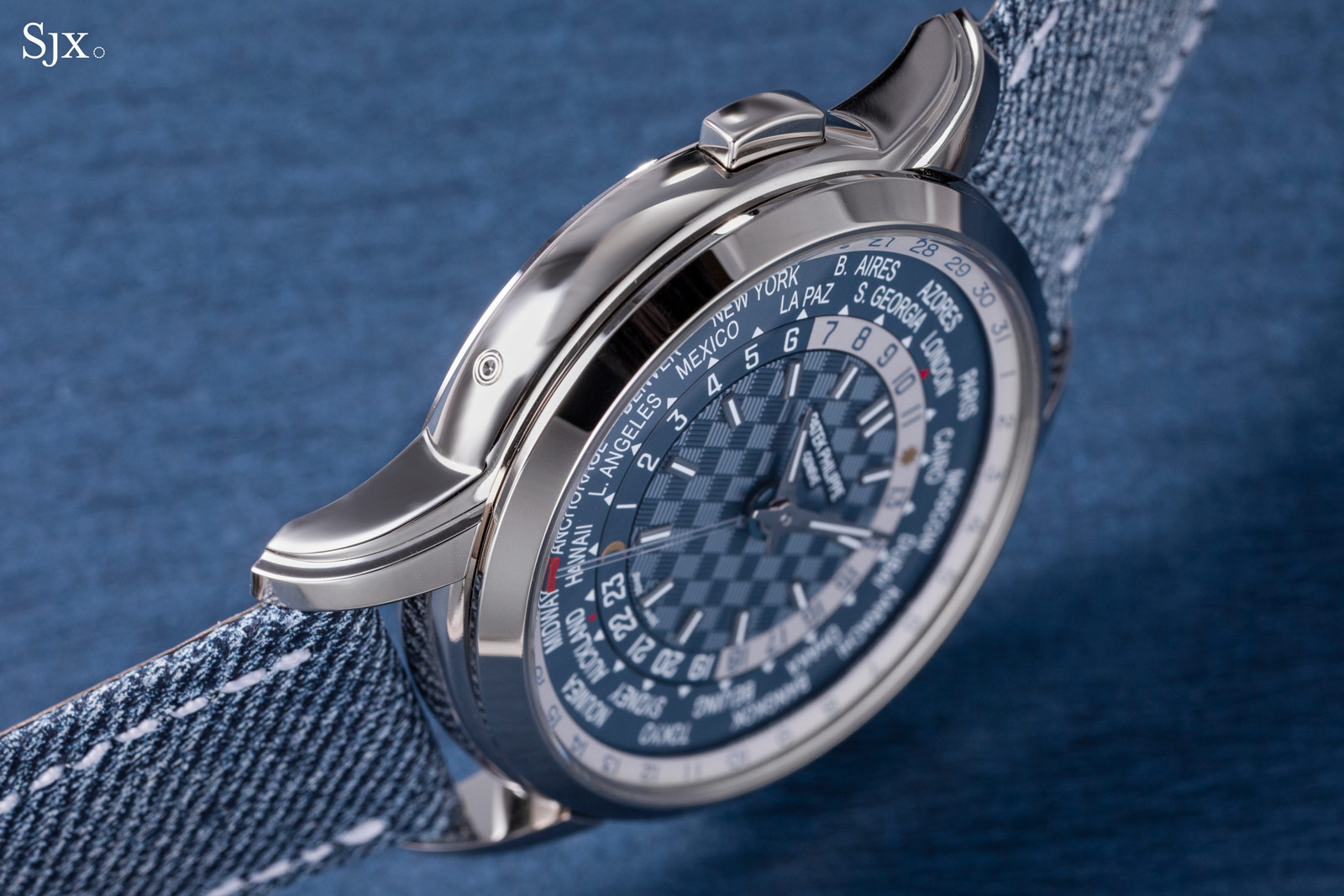
The pusher at 10 o’clock advances the local time and the city disc simultaneously; a feature of all Patek Philippe world time watches since 2000. The recessed pusher at eight o’clock advances the date.
Complicating things further is that there is a one-hour window each day when the date is the same everywhere on earth. This seemingly insignificant bit of trivia is the real stumbling block for a world timer with date, and something that the engineers at Patek solved with an elegant differential system that adds just 0.7 mm to the height of the movement. Even the date indicator is unusual, being made of mineral glass to create a floating effect and ensure unimpeded legibility of the city disc.
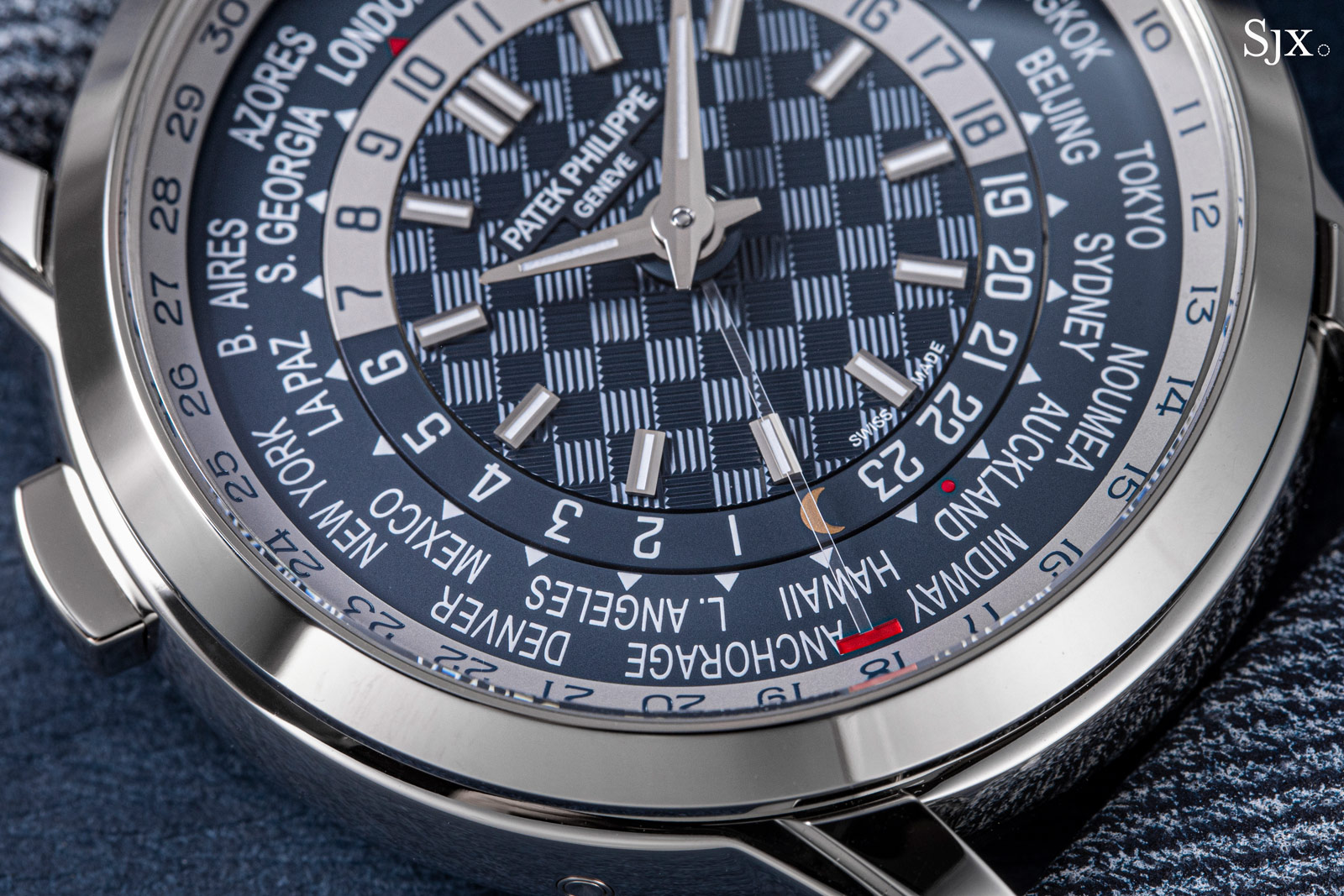
The red-tipped date pointer is made of mineral glass
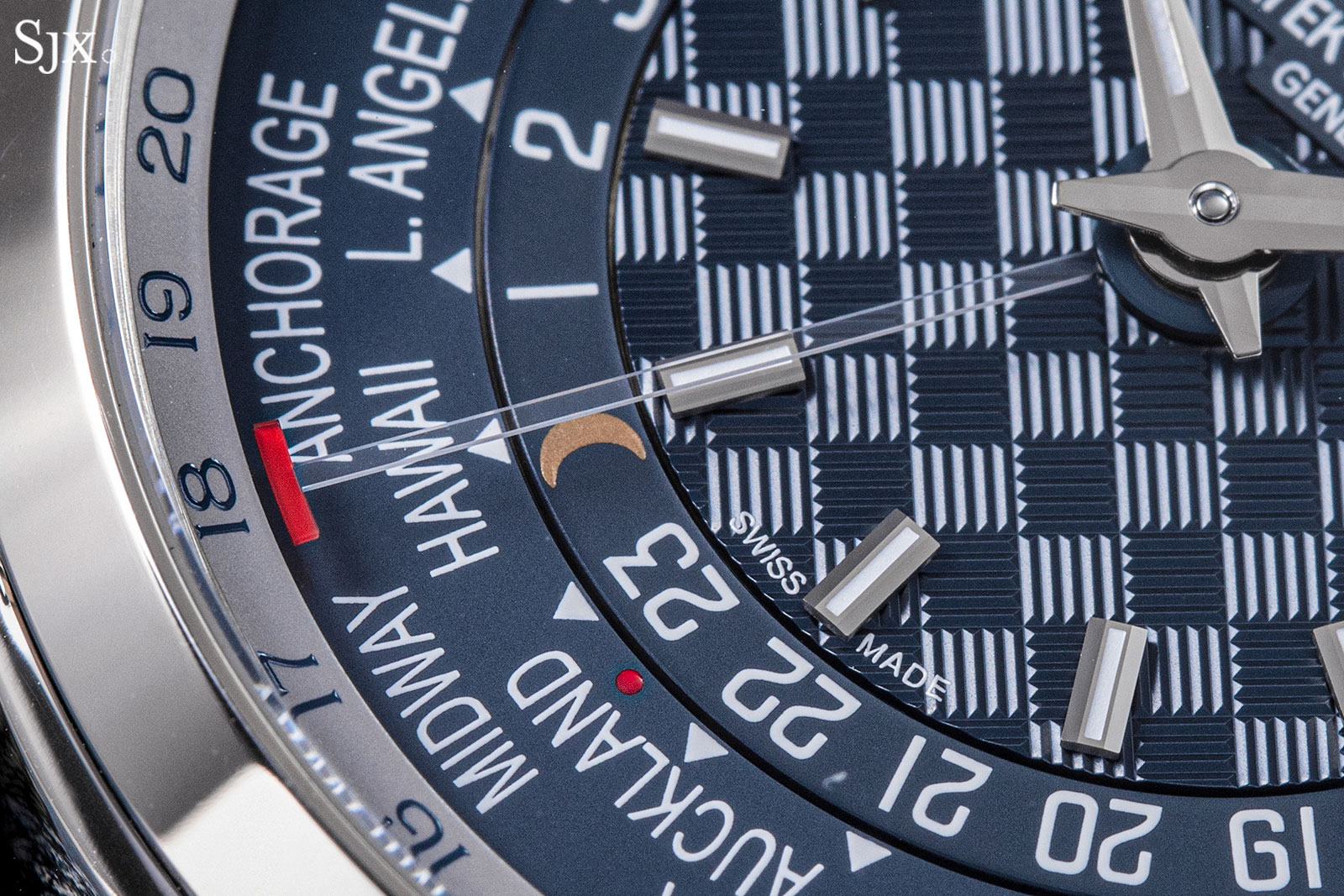
The fineness of the glass hand is only visible up close
The IDL is the reason why world time watches are usually devoid of a date function. Crossing the IDL requires some mechanical programming for a prospective date indicator to function properly, adding a layer of complexity to the otherwise mundane complication.
When crossing the IDL, depending on the exact time of crossing, the displayed date can either stay the same or go back one step. In order to safely accommodate this time zone quirk, Patek Philippe’s watchmakers implemented clever planetary gearing in the date indicator.
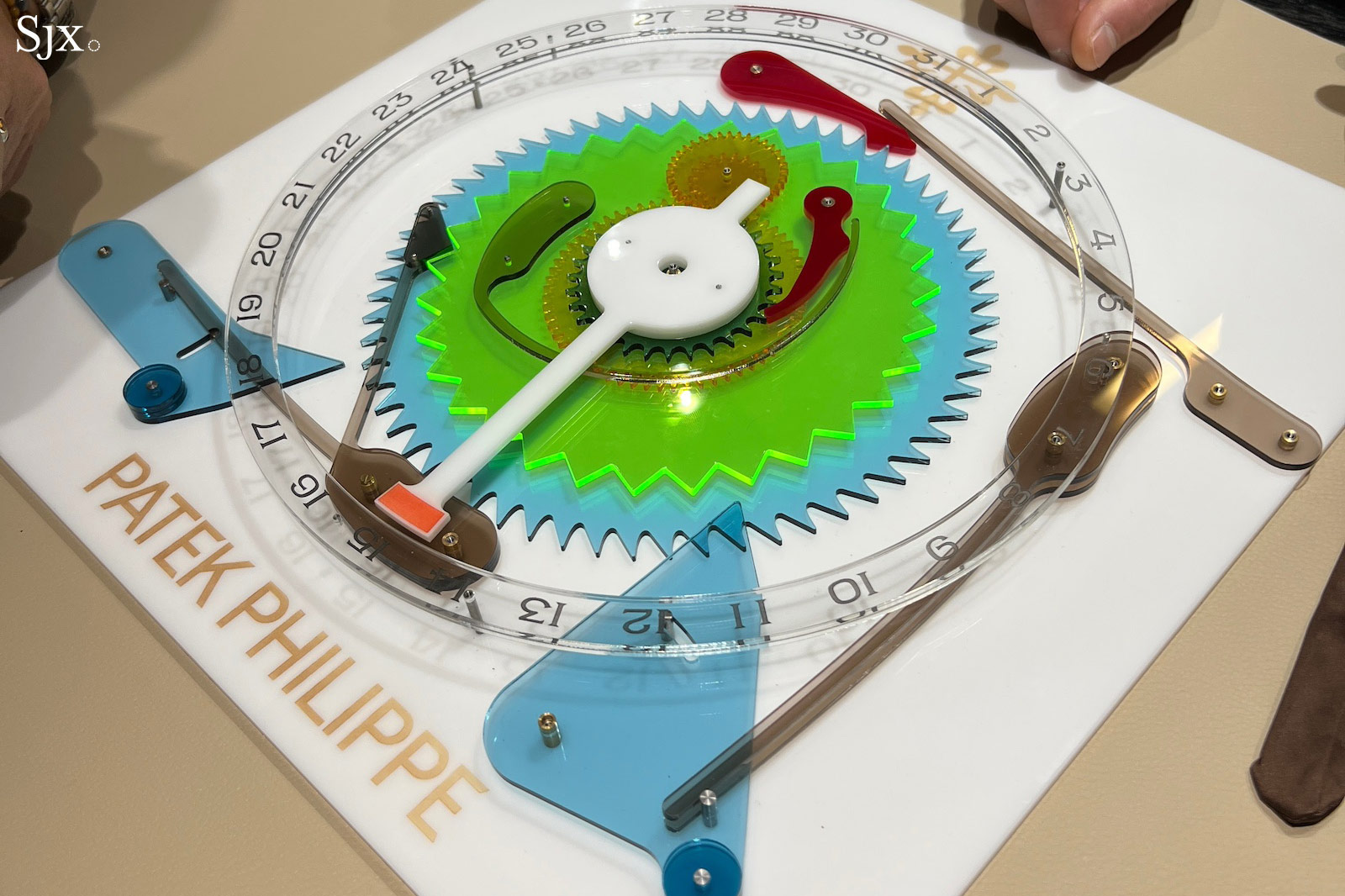
The clever differential system for the date illustrated by a large model of the mechanism
When the date switches normally, around midnight, a traditional finger engages a 31-toothed star wheel, making it advance one step. When crossing the IDL, depending on the exact time, a correction finger will engage a dedicated part of the differential set, while the base remains immobile. Due to the advantageous gearing, the date hand will jump back one step.
If the traditional date finger and the correction finger act on the differential at the same time, the date hand will retain its position. This sort of engagement happens during the specific timeframe when crossing the IDL doesn’t mandate a change of the date.
The mechanism is a clever, slim, and simple solution to a troublesome issue. A patent concerning such a device was filed by Patek Philippe as early as 2014, but only granted in 2020.
On the wrist
At 40 mm, the ref. 5330G is Patek Philippe’s largest simple world time watch to-date. But compared to recent references like the refs. 5130 and 5230, the extra size nearly disappears thanks to the visual depth provided by the date flange, which is raised above the outer edge of the dial.
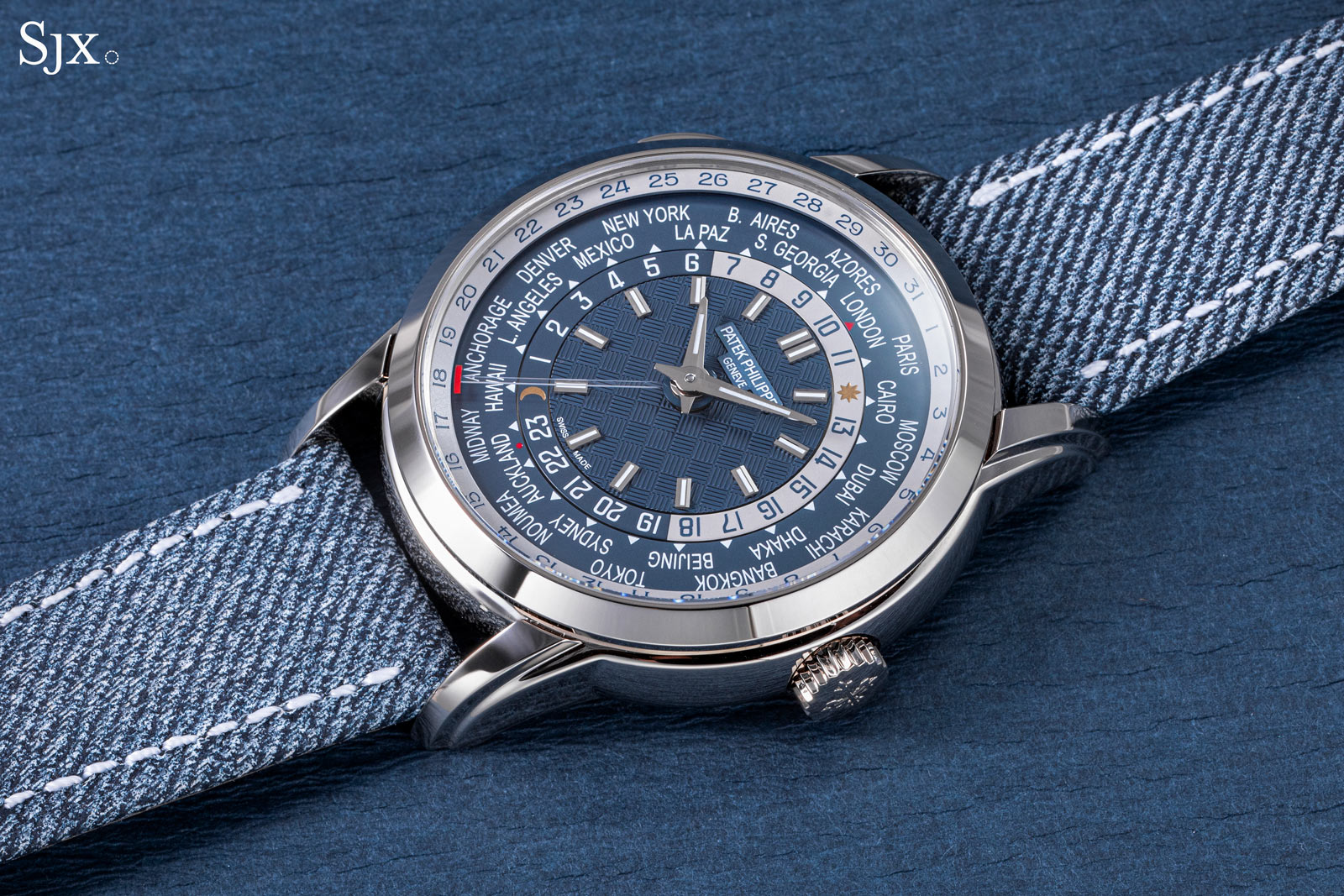
The visual depth provided by the date flange helps offset the larger 40 mm size of the case
This extra size is further offset by the elegantly shaped case, which features a stepped bezel and down-turned lugs. Combined with the supple (but polarising) denim-embossed calfskin strap, these characteristics result in a stable and comfortable fit on the wrist, wearing smaller than its dimensions suggest.
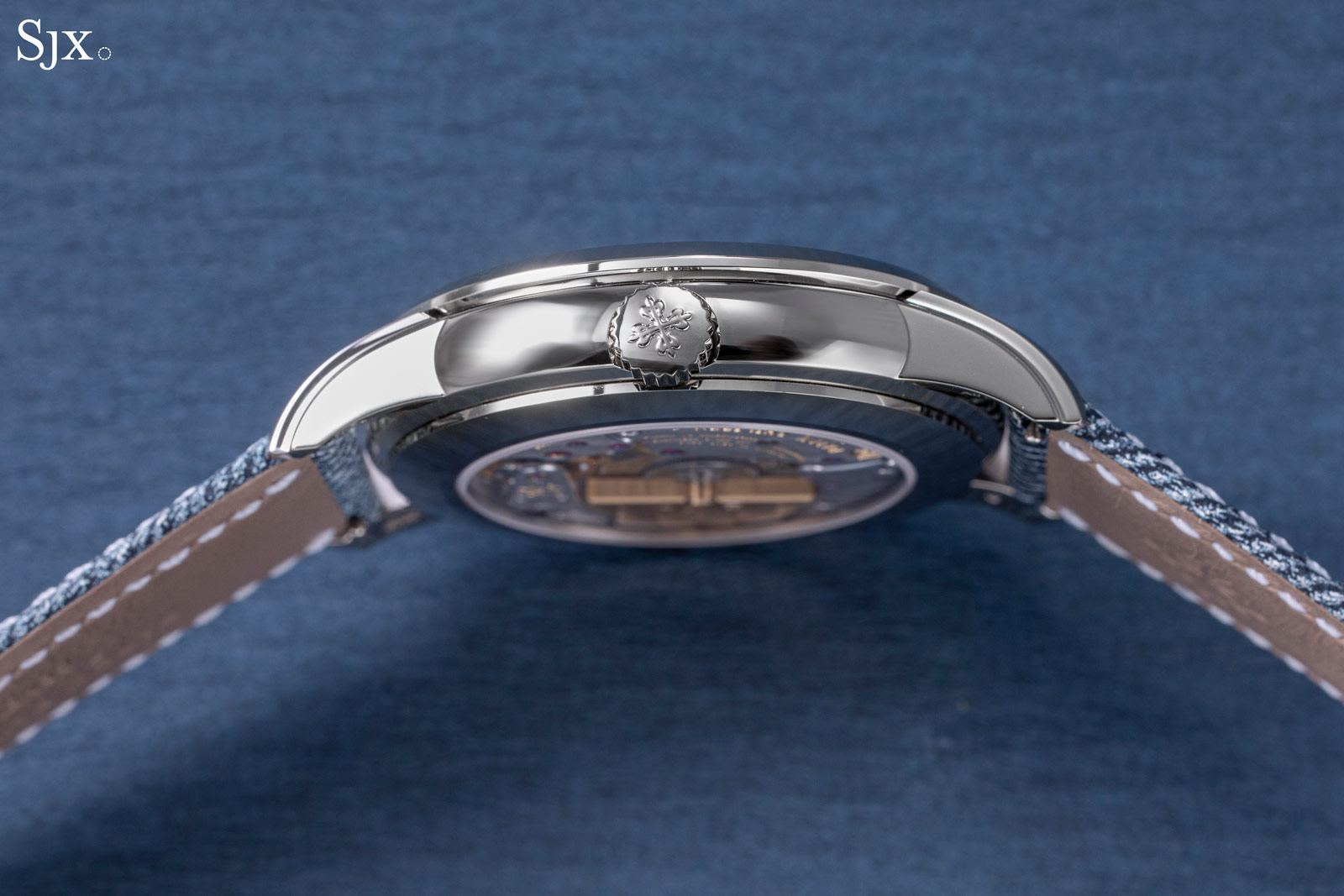
The stepped, downturned lugs enhance wearing comfort
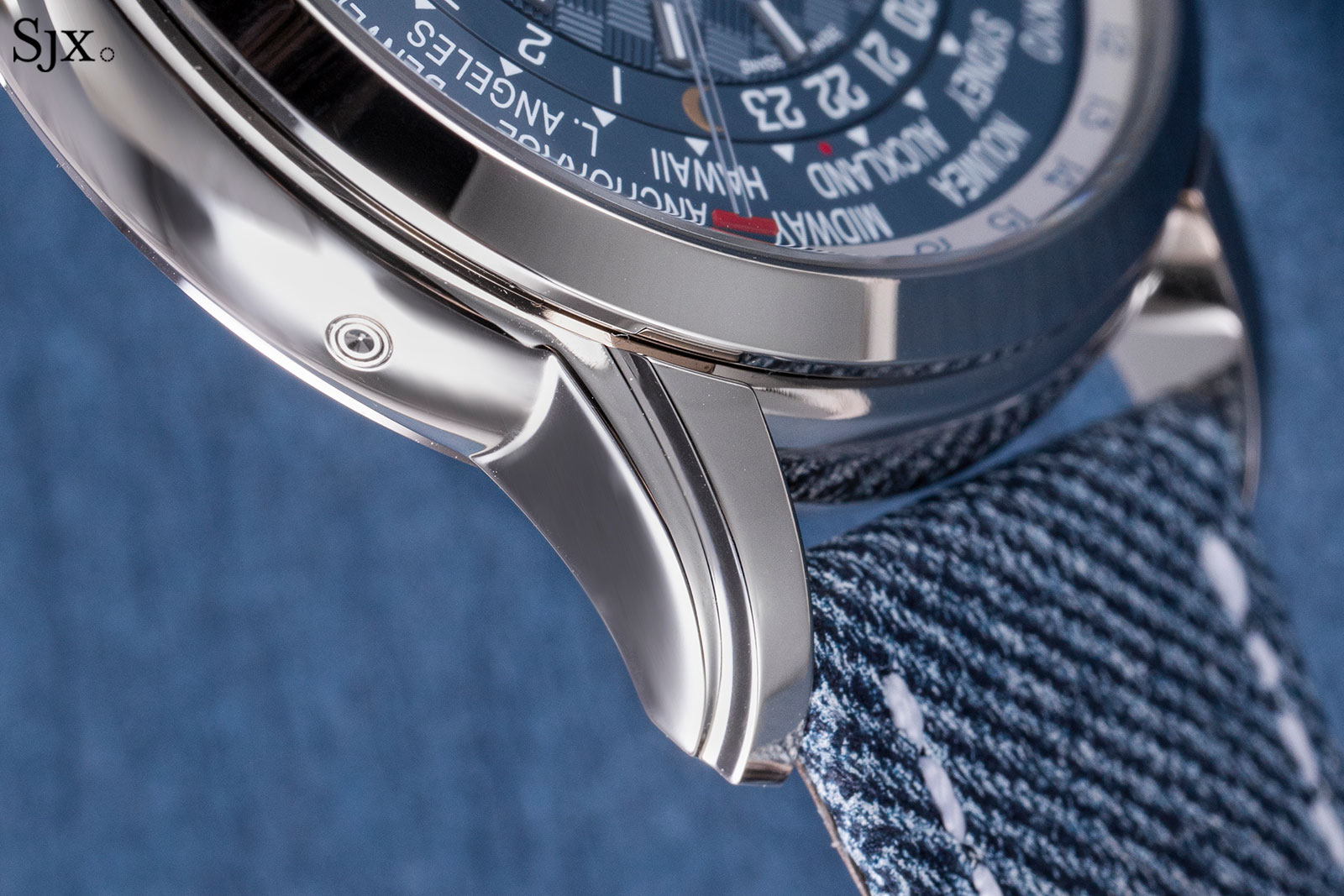
The vintage-inspired lugs with fluted edges
Patek Philippe has always made an effort to decorate the dials of its world time watches, often with traditional techniques like guilloche and cloisonné enamel.
The ref. 5330G offers a more contemporary stamped pattern called “carbon” that resembles a basket weave guilloche pattern. This pattern was originally developed for a handful of unique watches but is now found across the collection, including the Calatrava ref. 6007G in “racing” colours. While I prefer real engine-turned guilloche whenever possible, I have to admit the stamped carbon pattern is attractive and suits the more contemporary design.
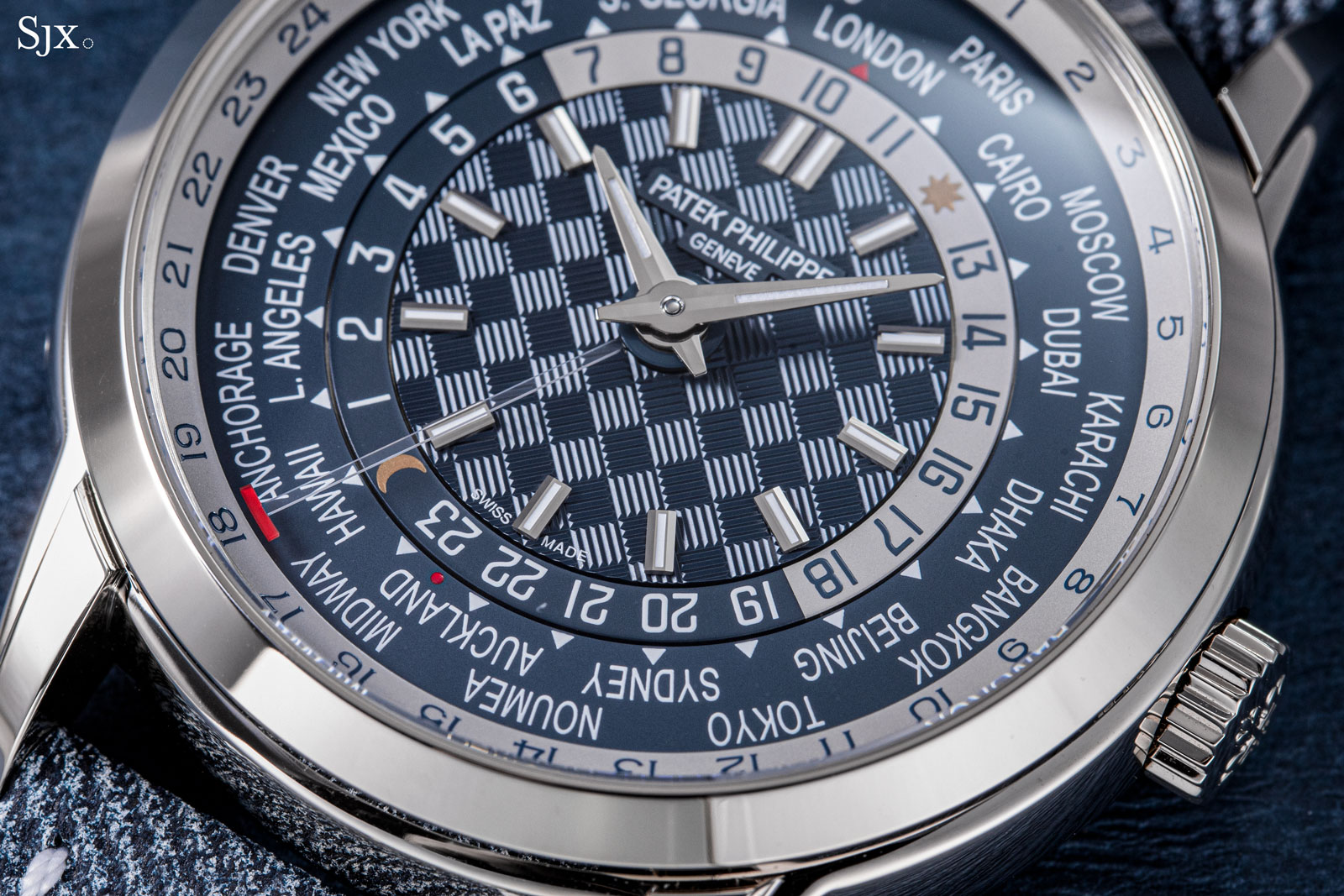
The 5330G’s dial features a stamped motif that resembles a basket weave guilloche pattern
The font choices of the ref. 5330G are also noteworthy, in a good way. Patek Philippe does a lot of things well, but it’s not the first brand that comes to mind when it comes to clever typography. While the city names are printed in the typical Helvetica-adjacent font, the typography for the 24-hour disc and date flange offer some flair.
The hours disc features angular numerals with open sixes and nines, which feels vaguely retro-futuristic – in keeping with the watch’s jet-age origins. Conversely, the date flange is printed with a font that more closely resembles the vintage typography used on historical models like the ref. 2523.
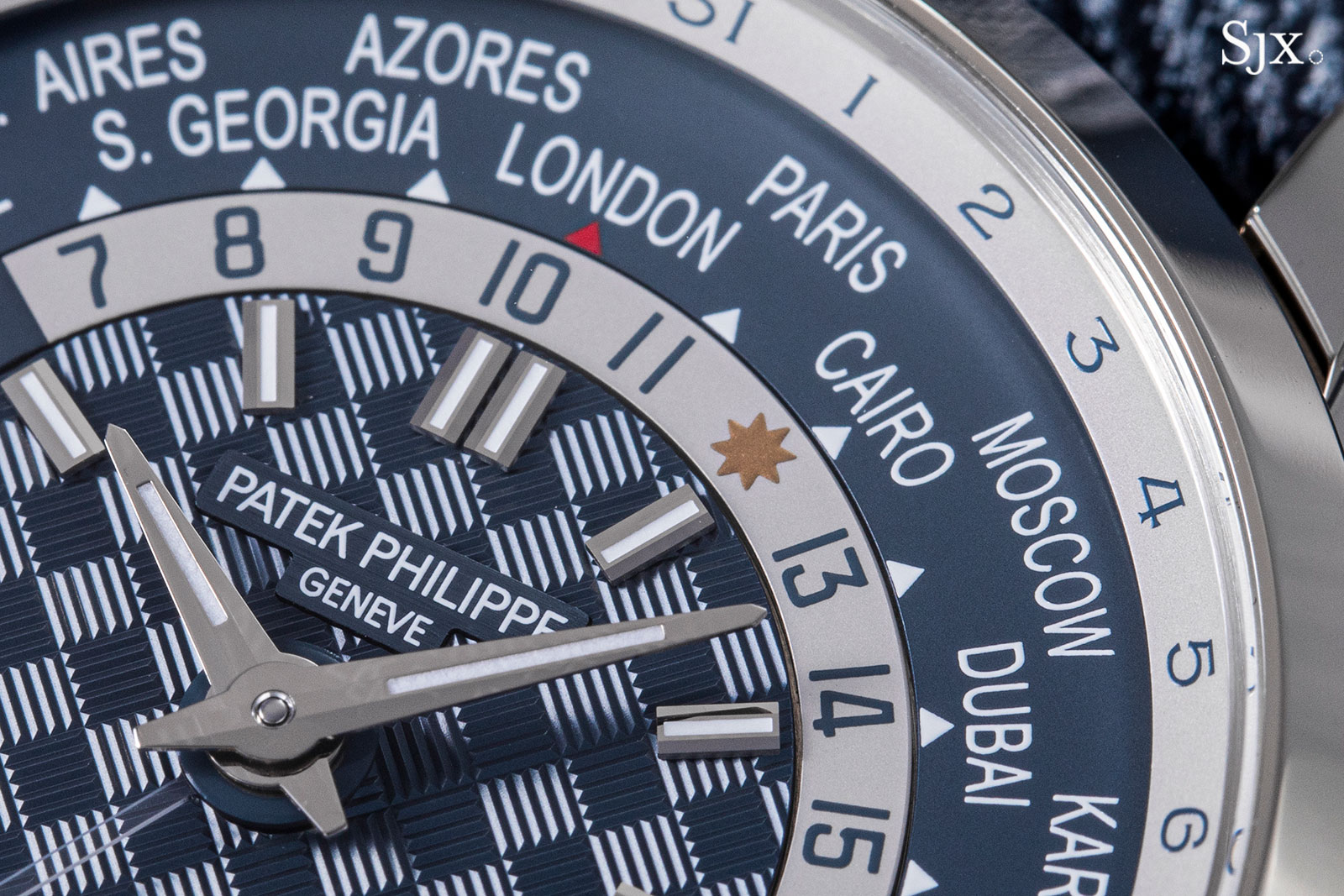
A new rate standard
Underneath the new date mechanism, the movement is largely unchanged. Like its contemporary predecessors, the ref. 5330G is powered by the venerable cal. 240, albeit upgraded to its latest guise, the cal. 240 HU C. While the underlying cal. 240 is almost 50 years old, the current iteration benefits from Patek Philippe’s silicon Spiromax balance spring.
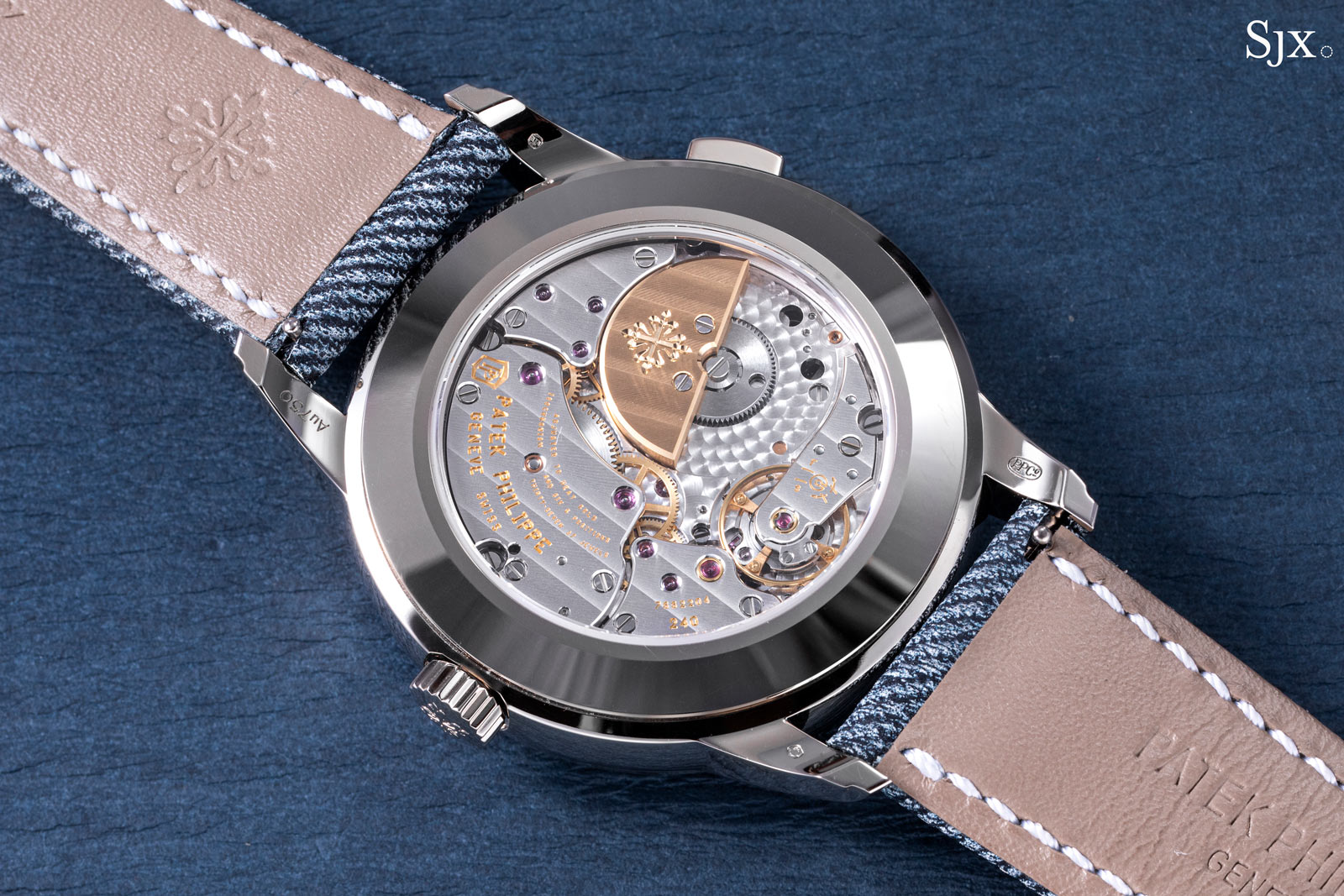
Despite being nearly 50 years old, the venerable caliber 240 still looks good
As a consequence of this 21st-century upgrade, the movement is now rated to run between -1 and +2 seconds per 24 hours. This new standard applies to any new Patek Philippe movement with a Spiromax hairspring, but for a slim movement with a leisurely 3 Hz rate and a relatively small balance wheel, this is an impressive technical feat. More broadly, it reflects the unparalleled industrial achievement of Patek Philippe’s new manufacture that has arguably perfected industrial-haute horlogerie on a large scale.
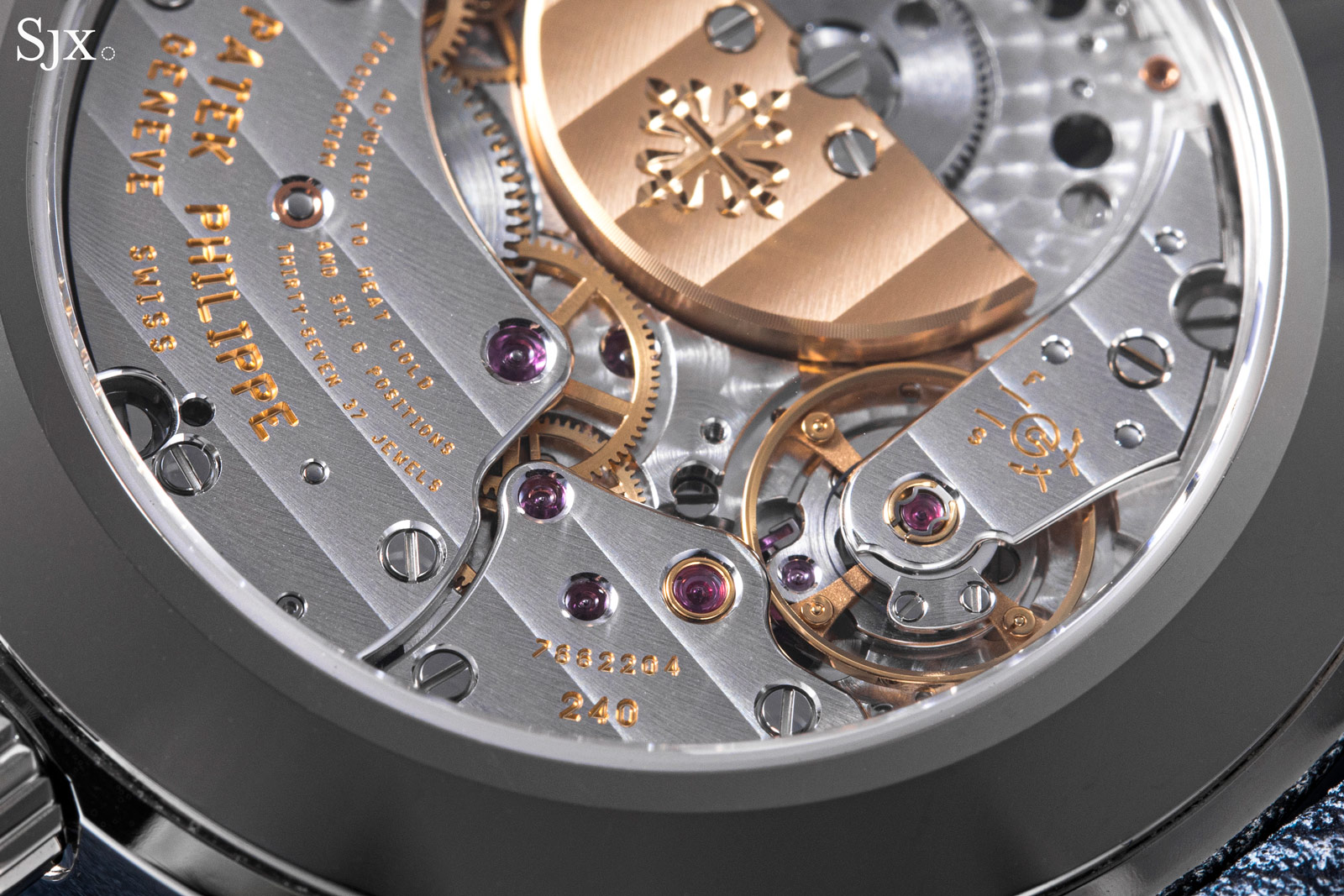
The Spiromax silicon hairspring ensures impressive rate stability
Key facts and price
Patek Philippe World Time with Date
Ref. 5330G-001
Diameter: 40 mm
Height: 11.57 mm
Material: 18K white gold
Crystal: Sapphire
Water resistance: 30 m
Movement: Cal. 240 HU C
Functions: Local hours and minutes, universal time, and pointer date
Winding: Automatic
Frequency: 21,600 beats per hour (3 Hz)
Power reserve: 48 hours
Strap: Denim-motif calfskin with 18K white gold folding clasp
Limited edition: No
Availability: At Patek Philippe boutiques and retailers
Price: US$76,590
For more information, visit Patek.com
Back to top.

